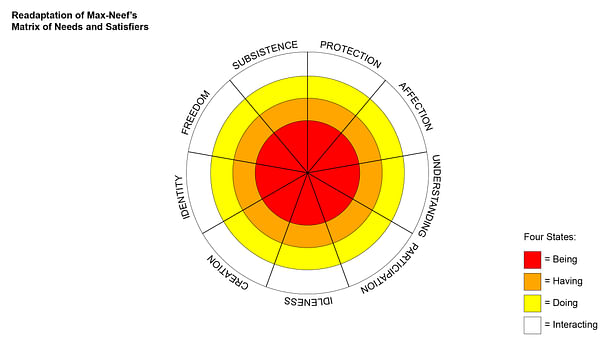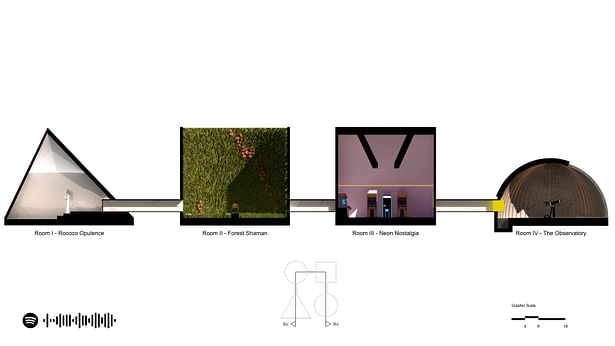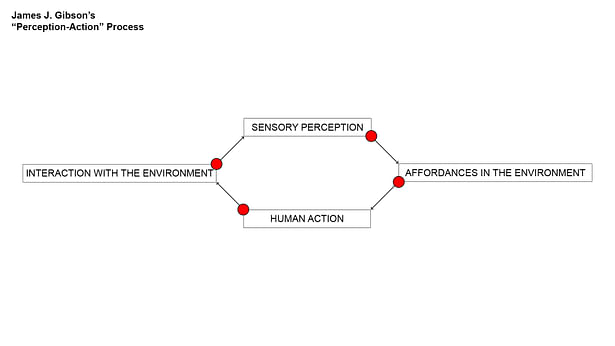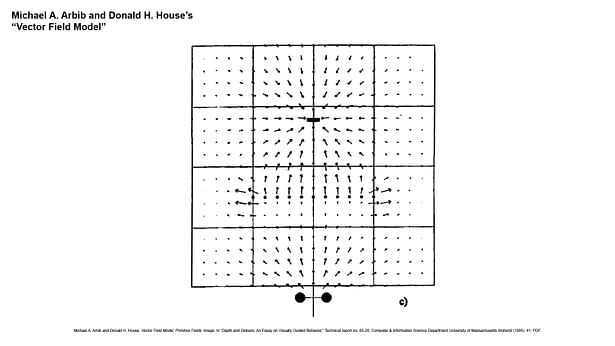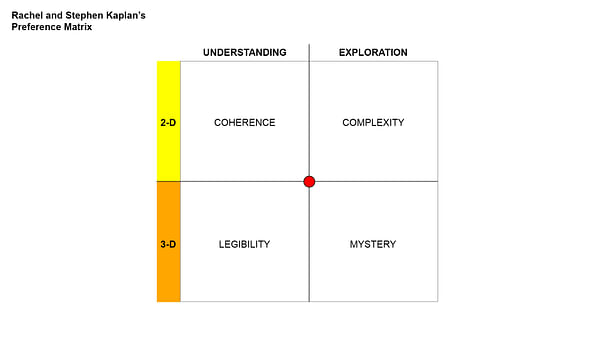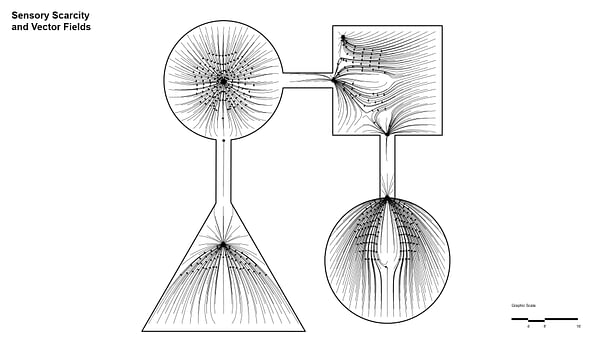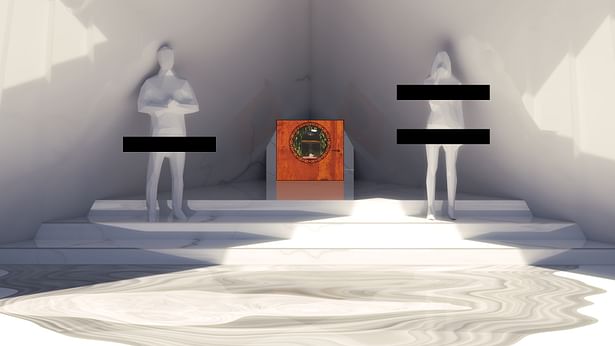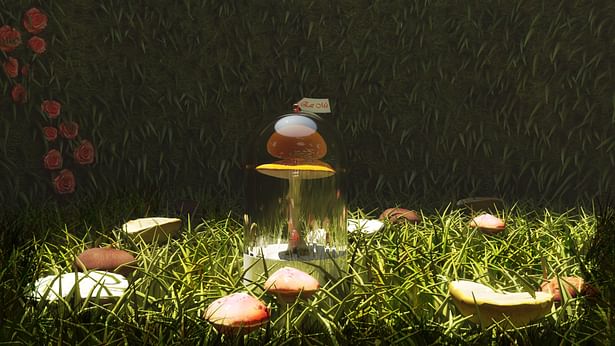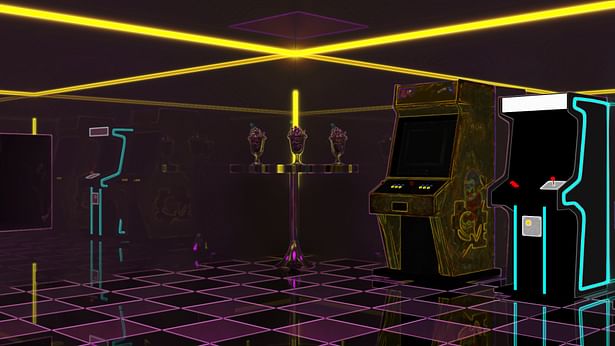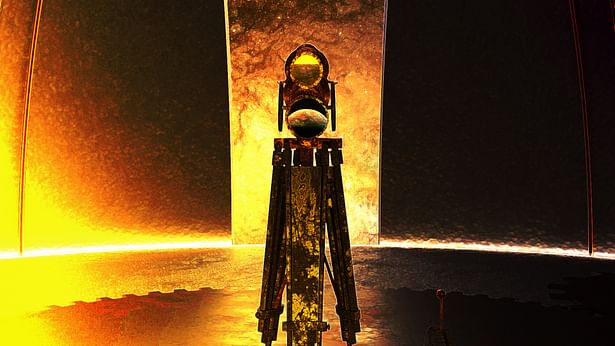
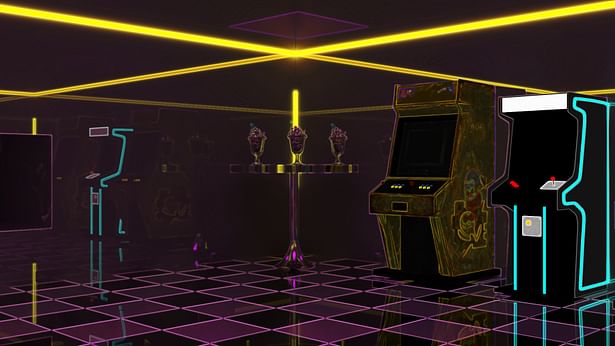
The World Health Organization (WHO) defines “health” as “a state of complete physical, mental and social well-being and not merely the absence of disease or infirmity”.[1] WHO’s definition gets to the nub of what a profound architectural experience entails. It accounts for dynamic psychological and physiological states and allows humans to fulfill mid-tier and higher-level needs (Image 1).[2] A riveting architectural space is comparable to the Goldilocks Zone, where a planet’s ecosystem allows life to flourish.[3] In a time when city planners are looking for the next panacea-of-a-building to breathe life back into their communities, what separates an ordinary building from that of an awe-inspiring masterwork?
Sensory qualities of a space, in conjunction with proportion, have the potential to heighten the overall human experience when occupying a work of architecture.[4] An ordinary building satisfies basic needs, if even, and stops there. Likewise, a self-aggrandizing and eye-catching building design can fail to incorporate other sensory qualities and meet human needs.[5] In short, the sensory shortcomings belie the building’s dazzling façade. Hence, refinement of the human needs models by Abraham Maslow and Manfred Max-Neef is recommended; to examine if there is a correlation between human needs and sensory experiences (Images 1 and 2). Both models explore human homeostasis, achievement, and self-discovery and could inform the senses implemented in future architectural spaces.[6] With a multisensory focus, aspiring architects might accelerate a rise in their credibility, with building designs that fulfill complex human needs. Multisensory buildings should provide the stage for maximizing human experience, and in doing so, become timeless. Yet, architects whose buildings engage vision, coupled with another sense, are an anomaly.[7] Enter like Tom Kundig and Frank Lloyd Wright.
Kundig’s “gizmos” encourage human touch and Wright’s use of ‘compression and expansion’ affects position perception or proprioception.[8] Unknowingly or not, Kundig and Wright leverage these sensory qualities to stir feelings of ecstasy in some inhabitants. At the writing of this essay, there is no prescribed approach to designing emotionally resonate spaces. Often it is only through years of design experience, that ordinary architects can hone their spatial and sensory discernment—and blossom into respected architects.[9] The architects who consistently design profound buildings may have subconsciously polished their intuition and methodologies.[10] One can speculate that architect’s instincts manifest in their architectural style and the feelings elicited by their buildings. The works of the aforementioned architects have tapped into a couple of sensory qualities, but seldom unite all of them. Architects can make awe-inspiring architectural experiences less random through a careful orchestration of multisensory journeys.[11]
Before implementing multisensory, spatial processions in buildings, observational research is essential. Architect’s need to gauge the multisensory effects on a person’s unique psychology, physiology, subjectivity, and architectural experience. The four, sequenced laboratory spaces and three linkage Tunnel-Funnels accomplish this task (Image 3). Samin Nosrat’s book Salt, Fat, Acid, Heat: Mastering the Elements of Good Cooking describes four eponymous cooking qualities that lead to a transporting culinary experience.[12] Similarly, each room in this laboratory has a complementary milieu that is intended to conjure feelings of bliss.
Besides the seven senses, the three principles involved in this spatial sequence are: (1) the “contrast effect,” (2) sensory scarcity, and (3) the effects of psilocybin mushrooms on the senses (Image 4).[13] Firstly, each space’s sensory qualities are juxtaposed with the prior room’s qualities, so that each space mutually enhances the next.[14] Secondly, by withholding necessities, and giving users glimpses of “affordances,” people are drawn further into the depths of the spatial sequence, in a process of sensory scarcity.[15] James J. Gibson’s “perception-action” process; Max-Neef’s “Deprivation” discussion; Michael Arbib and Donald House’s “Vector Field Model”; and Rachel and Stephen Kaplan’s “Preference Matrix” have all informed the abovementioned concept of sensory scarcity (Images 5, 6, 7, and 8).[16] Finally, the mind-altering mushrooms may exaggerate sensory input and trigger synesthesia.[17]
Time to enter the rabbit hole. Test subjects begin in a cold, marble-covered room, and are in the company of two, nude chanters who pause to signal to the tunnel entrance (Image 9). Subjects can interact with the performers but are compelled to crawl through the humid tunnel to the next room, with its comforting light, warmth, and flora (Image 10). After following the instructions and ingesting the psychedelic mushroom, the world begins to spin. In the third room neon lights, arcade machines, and a glowing cube are obscured by a sweet-scented mist, creating an air of mystery (Image 11). Having eaten the sundae in the third room, the subject crawls through another tunnel and pushes the cube lightly—revealing the fourth room. The fourth room contains an operable telescope focused on the night sky (Image 12). Inside the spherical shell of The Observatory pure silence pervades. Overhead is a congealing mass of stars.
Disclaimer: The author of this essay does not condone the recreational use of psilocybin mushrooms or similar psychedelics.
. . .
Footnotes
[1] "What is the WHO definition of health?," World Health Organization, accessed February 8, 2021, https://www.who.int/about/who-we-are/frequently-asked-questions.
[2] Saul McLeod, "Maslow's Hierarchy of Needs," Simply Psychology, last modified May 21, 2018, https://canadacollege.edu/dreamers/docs/Maslows-Hierarchy-of-Needs.pdf, 11.; The Editors of Encyclopaedia Britannica, “Humanistic psychology,” Encyclopædia Britannica, last modified May 27, 2020.
[3] Tony Greicius, "In the Zone: How Scientists Search for Habitable Planets," National Aeronautics and Space Administration, last modified August 7, 2017.
[4] Juhani Pallasmaa, The Eyes of the Skin Architecture and the Senses. (Chichester, West Sussex: Wiley, 2012), 11.; Francis D.K. Ching, Architecture: Form, Space, and Order (Hoboken: John Wiley & Sons, 2007), X.
[5] Juhani Pallasmaa, The Eyes of the Skin Architecture, 19.
[6] McLeod, "Maslow's Hierarchy,” 4.; Paul Ekins and Manfredi Max-Neef, Real Life Economics: Understanding Wealth Creation. (London, UK: Routledge, 1992), 199-200.; Manfredi A. Max-Neef, Antonio Elizalde, and Martín Hopenhayn, Human Scale Development: Conception, Application and Further Reflections. (London: Zed Books, 1991), 14-18.
[7] Juhani Pallasmaa, The Eyes of the Skin Architecture and the Senses. (Chichester, West Sussex: Wiley, 2012), 70.
[8] Dung Ngo, Tom Kundig: Houses. (Hudson: Princeton Architectural Press, 2006), 51.; Kwang-ho Kim, "A Study on the Concept of Prospect in Frank Lloyd Wright's Works," Journal of Asian Architecture and Building Engineering 1, no. 1 (March 2002): 299-300.; John C., Tuthill and Eiman Azim, "Proprioception," Current Biology 28, no. 5 (March 2018): R194.
[9] David W. Galenson, "Innovators: Architects," National Bureau of Economic Research Working Paper Series, (January 2010): 14.; Juhani Pallasmaa, The Thinking Hand: Existential and Embodied Wisdom in Architecture (Hoboken: Wiley, 2015), 15-16.
[10] "Arbib 3 Atmosphere as a Kind of Affordance," YouTube video, 1:07:06, posted by “Michael Arbib,” February 6, 2018,
[11] Pallasmaa, The Eyes of the Skin Architecture,19.
[12] Samin Nosrat, Salt, Fat, Acid, Heat: Mastering the Elements of Good Cooking. (New York: Simon & Schuster, 2017), 41-42, Apple Books.; Nosrat, Salt, Fat, Acid, Heat: Mastering, 91-92, Apple Books.; Nosrat, Salt, Fat, Acid, Heat: Mastering, 147, Apple Books.; Nosrat, Salt, Fat, Acid, Heat: Mastering, 181-182, Apple Books.
[13] Darren Bagley, “Beyond the five senses: Temperature,” Michigan State University, last modified November 19, 2015.; Jones, “Proprioception,” ScienceDirect, last modified 2000. Ching, Architecture: Form, Space, and Order, XI.; "Contrast Effect Definition," American Psychological Association, accessed February 10, 2021, https://dictionary.apa.org/contrast-effect.
[14] "Contrast Effect Definition," American Psychological Association.
[15] James J. Gibson, The Ecological Approach to Visual Perception. (Hove, East Sussex: Psychology Press, 2015), 119-120.
[16] Gibson, The Ecological Approach, 215-216.; Brett Martensen, "The Perception–Action Hierarchy and its Implementation Using Binons (Binary Neurons)," Procedia Computer Science 169 (2020): 489-490.; Ekins and Max-Neef, Real Life Economics: Understanding Wealth Creation, 201.; Max-Neef, Elizalde, and Hopenhayn, Human Scale Development: Conception, Application and Further Reflections, 23.; Michael A. Arbib and Donald H. House, “Depth and Detours: An Essay on Visually Guided Behavior,” Technical report no. 85-28, Computer & Information Science Department University of Massachusetts Amherst (1985): 40.;"Arbib 1 An Action Oriented Perspective on Space NfA@UCSD Winter2018 2018 01 10," YouTube video, 2:09:44, posted by “Michael Arbib,” January 10, 2018, ; Rachel Kaplan, Stephen Kaplan, and Robert L. Ryan, With People in Mind: Design and Management of Everyday Nature. (Washington, DC: Island Press, 2005), 13.
[17] Giovanni Petri et al., “Homological Scaffolds of Brain Functional Networks,” Journal of the Royal Society Interface
. . .
Bibliography
American Psychological Association. "Contrast Effect Definition." APA Dictionary of Psychology. Accessed February 10, 2021. https://dictionary.apa.org/contrast-effect.
Arbib, Michael. "Arbib 1 An Action Oriented Perspective on Space NfA@UCSD Winter2018 2018 01 10." Lecture presented at University of California San Diego, 2018. Video. YouTube. Posted by Michael Arbib, January 10, 2018. Accessed February 9, 2021.
———. "Arbib 3 Atmosphere as a Kind of Affordance." Lecture presented at University of California San Diego, 2018. Video. YouTube. February 6, 2018. Accessed February 9, 2021.
Arbib, Michael A., and Donald H. House. Depth and Detours: An Essay on Visually Guided Behavior. Technical report no. 85-28. Amherst, MA: Computer & Information Science Department University of Massachusetts Amherst, 1985. https://web.cs.umass.edu/publication/docs/1985/UM-CS-1985-028.pdf.
Bagley, Darren. "Beyond the five senses: Temperature." Michigan State University. Last modified November 19, 2015. Accessed February 16, 2021. https://www.canr.msu.edu/news/beyond_the_five_senses_temperature.
Britannica, T. Editors of Encyclopaedia (2020, May 27). Humanistic psychology. Encyclopedia Britannica. https://www.britannica.com/science/humanistic-psychology.
Ekins, Paul, and Manfredi Max-Neef. "Development and human needs." In Real Life Economics: Understanding Wealth Creation. 197-213. London, UK: Routledge, 1992.
Ching, Francis D. K. "Introduction." Introduction to Architecture: Form, Space, and Order, 3rd ed., X-XIV. Hoboken, N. J.: John Wiley & Sons, 2007.
Galenson, David W. "Innovators: Architects." National Bureau of Economic Research Working Paper Series, January 2010. National Bureau of Economic Research.
Gibson, James Jerome. The Ecological Approach to Visual Perception. Classic ed. Hove, East Sussex, UK: Psychology Press, 2015.
Greicius, Tony, ed. "In the Zone: How Scientists Search for Habitable Planets." National Aeronautics and Space Administration. Accessed February 8, 2021. https://www.nasa.gov/mission_p... kepler/news/kepler20130717.html.
Jones. "Proprioception." ScienceDirect. Last modified 2000. Accessed February 15, 2021. https://www.sciencedirect.com/topics/neuroscience/proprioception#:~:text=Proprioception%20(or%20kinesthesia)%20is%20the,force%20(Jones%2C%202000).
Kaplan, Rachel, Stephen Kaplan, and Robert L. Ryan. With People in Mind: Design and Management of Everyday Nature. Washington, DC: Island Press, 2005.
Kim, Kwang-ho. "A Study on the Concept of Prospect in Frank Lloyd Wright's Works." Journal of Asian Architecture and Building Engineering 1, no. 1 (March 2002): 297-301. https://doi.org/10.3130/jaabe.1.297.
Martensen, Brett. "The Perception–Action Hierarchy and its Implementation Using Binons (Binary Neurons)." Procedia Computer Science 169 (2020): 489-500.
Max-Neef, Manfredi A. Human Scale Development: Conception, Application and Further Reflections, by Manfredi A. Max-Neef, Antonio Elizalde, and Martín Hopenhayn. London, UK: Zed Books, 1991.
McLeod, Saul. "Maslow's Hierarchy of Needs." Simply Psychology. Last modified May 21, 2018. Accessed February 9, 2021. https://canadacollege.edu/dreamers/docs/Maslows-Hierarchy-of-Needs.pdf.
Ngo, Dung. "In the Realm of the Senses." In Tom Kundig: Houses, by Steven Holl, Rick Joy, and Billie Tsien, 47-53. Hudson, NY: Princeton Architectural Press, 2006.
Nosrat, Samin. Salt, Fat, Acid, Heat: Mastering the Elements of Good Cooking. 4th ed. Illustrated by Wendy MacNaughton. New York, NY: Simon & Schuster, 2017. Digital file.
Pallasmaa, Juhani. "Embodied Experience and Sensory Thought." Introduction to The Thinking Hand: Existential and Embodied Wisdom in Architecture, 11-23. Hoboken, NJ: Wiley, 2015.
———. The Eyes of the Skin Architecture and the Senses. Chichester, West Sussex, UK: Wiley, 2012.
Petri, Giovanni., Paul Expert, Federico Turkheimer, Robin Carhart-Harris, David Nutt, Peter J. Hellyer, and Francesco Vaccarino. "Homological Scaffolds of Brain Functional Networks." Journal of the Royal Society Interface 11, no. 101 (December 6, 2014): 20140873. https://doi.org/10.1098/rsif.2014.0873.
Tuthill, John C., and Eiman Azim. "Proprioception." Current Biology 28, no. 5 (March 2018): R194-R203. https://doi.org/10.1016/j.cub.2018.01.064.
"What is the WHO definition of health?" World Health Organization. Accessed February 8, 2021. https://www.who.int/about/who-we-are/frequently-asked-questions. 11, no. 101 (December 2014): 7.
Status: Competition Entry
My Role: Researcher, Designer, and Author
Additional Credits: Image, 3D Model, and Caption Bibliography
Arbib, Michael A., and Donald H. House. Vector Field Model, Primitive Fields. Image. In Depth and Detours: An Essay on Visually Guided Behavior. Technical report no. 85-28. Amherst, MA: Computer & Information Science Department University of Massachusetts Amherst, 1985. PDF.
ARIA. Jukebox. 3D Model. Sketchfab. 2020. Accessed February 15, 2021. https://sketchfab.com/3d-models/jukebox-127cd1a00ca143af9db9cf4e58ddd956.
This 3D model has been re-textured and the glass panel has been removed
Borovkov, Nikita. Arcade Machine. 3D Model. Sketchfab. 2017. Accessed February 14, 2021. https://sketchfab.com/3d-models/arcade-machine-444b485039474d818aa661ca13ff4dff.
Bridge, Justin. "Om Mantra Meditation: Chanting Monks, Tibetan Singing Bowls." On Om Mantra Meditation: Chanting Monks, Tibetan Singing Bowls. By Justin Bridge. Great Meditation, 2015, compact disc. Accessed February 15, 2021. https://open.spotify.com/track/0CyFxPpaJz26JEAvWINs4l.
Britannica, T. Editors of Encyclopaedia (2020, May 27). Humanistic psychology. Encyclopedia Britannica.
https://www.britannica.com/science/humanistic-psychology.
Ekins, Paul, and Manfredi Max-Neef. "Development and human needs." In Real Life Economics: Understanding Wealth Creation. 197-213. London, UK: Routledge, 1992.
Gibson, James Jerome. The Ecological Approach to Visual Perception. Classic ed. Hove, East Sussex, UK: Psychology Press, 2015.
Ion_omat. Arcade machine. 3D Model. Sketchfab. 2017. Accessed February 13, 2021. https://sketchfab.com/3d-models/arcade-machine-aeaadc92e09842078d464d619ff5864a.
The arcade tickets have been removed from this model
JevinJones. Amanita muscaria mushroom. 3D Model. Sketchfab. 2020. Accessed February 14, 2021. https://sketchfab.com/3d-models/amanita-muscaria-mushroom-fc4ad155dc954025886425388f714135.
Johndesmond144. Telescope. 3D Model. Sketchfab. 2019. Accessed February 14, 2021. https://sketchfab.com/3d-models/telescope-f35899eb33d44b6983fc4f73ae4ce1ea.
This 3D model has been re-textured
Kaplan, Rachel, Stephen Kaplan, and Robert L. Ryan. With People in Mind: Design and Management of Everyday Nature. Washington, DC: Island Press, 2005.
Kim, Kwang-ho. "A Study on the Concept of Prospect in Frank Lloyd Wright's Works." Journal of Asian Architecture and Building Engineering 1, no. 1 (March 2002): 297-301. https://doi.org/10.3130/jaabe.1.297.
Martensen, Brett. "The Perception–Action Hierarchy and its Implementation Using Binons (Binary Neurons)." Procedia Computer Science 169 (2020): 489-500.
Max-Neef, Manfredi A. Human Scale Development: Conception, Application and Further Reflections, by Manfredi A. Max-Neef, Antonio Elizalde, and Martín Hopenhayn. London, UK: Zed Books, 1991.
McLeod, Saul. "Maslow's Hierarchy of Needs." Simply Psychology. Last modified May 21, 2018. Accessed February 9, 2021. https://canadacollege.edu/dreamers/docs/Maslows-Hierarchy-of-Needs.pdf.
Norgeot, Loïc. Lowpoly Mushrooms. 3D Model. Sketchfab. 2018. Accessed February 14, 2021. https://sketchfab.com/3d-models/lowpoly-mushrooms-c865fb845bac42c7939da06d4617b7b1.
Olivier, Ben. Rose Scan. 3D Model. Sketchfab. 2018. Accessed February 13, 2021. https://sketchfab.com/3d-models/rose-scan-48bc8f9448184489807301064d5dd538.
Warkarma. Sundae - Sketchfab Low Poly Challenge: Desserts. 3D Model. Sketchfab. 2020. Accessed February 13, 2021. https://sketchfab.com/3d-models/sundae-sketchfab-low-poly-challenge-desserts-523838ecb26b404d948b393a3dcc439e.
The glass bowl, ice cream scoop, crunchy bits, and cherries have been re-textured

